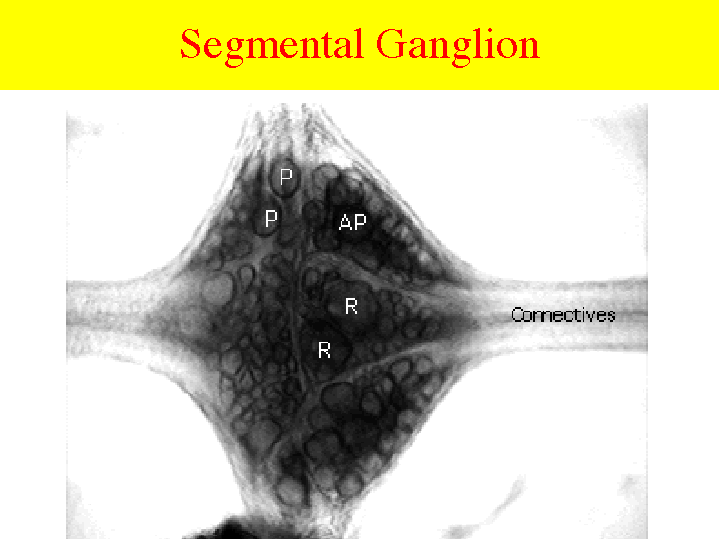
Medicinal leeches, Hirudo medicinalis, belong to the phylum Annelida which comp rises the segmented worms. The most distinguishing characteristic of Annelida is body segmentation along the anterioposterior axis, which is clearly reflecte d in the organization of their central nervous system (CNS). Th e CNS of the medicinal leech is composed of 34 ganglia: six fused ganglia form the head ganglion, two of which form the supraesophageal ganglion and four for m the subesophageal ganglion; seven fused ganglia form the tail ganglion and a chain of 21 ganglia, with one per mid-body segment, form the segmental nerve co rd. The four fused ganglia comprising the subesophageal ganglion, th e segmental ganglia and the six fused ganglia of tail ganglion arise developmen tally from the same neuroblasts, while the two fused ganglia comprising the supraesophageal ganglion have a different developmental origin. Each segmental ganglion and each of the four fused ganglia of the subeso phageal ganglion contain approximately 200 pairs of neurons with unipolar cell bodies that range in diameter from 10 to 100 microns and are located in a monolayer surrounding a central neuropile.

All synaptic connections between neurons occur in a central neuropile. Both impulse and synaptic activ ity can be monitored directly from the cell bodies of individual neurons with fine microelectrodes. Over 50 pairs of segmental neurons have been identified and can be reliably located in the segmental ganglia based on their position within the ganglion, size, shape and physiological properties, while only 10 - 15 pairs of neurons have been identified in the subesophageal ganglion. The segmental ganglia are joined by connectives which are composed of two large lateral bundles of axons and a thin, medial bundle called Faivre's nerve. A pair of nerve roots arises from each segmental ganglion to innervate the body wall musculature surrounding that segment. Three distinct muscle layers: circular, oblique and longitudinal, form the tubular hydroskeleton (i.e. body wall) of the leech. These three layers, together with the dorsoventral muscles are largely responsible for the relatively simple repertoire of movements in leechs.